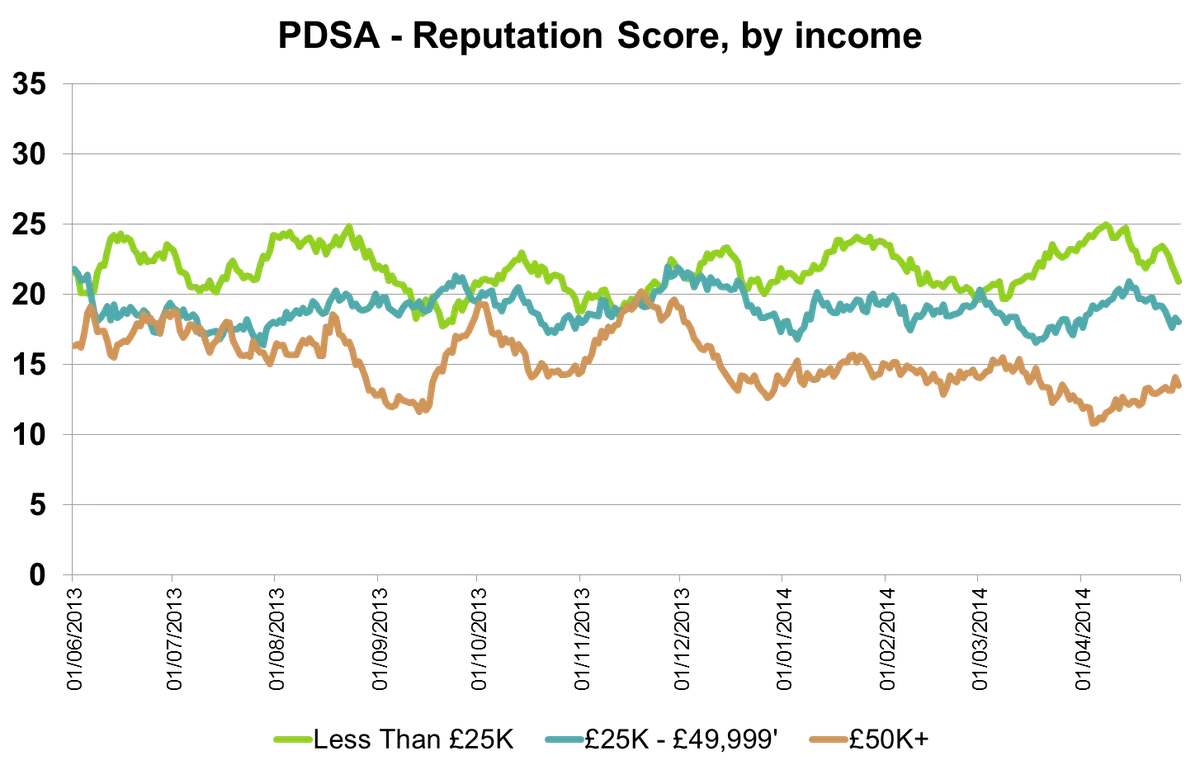The latest Brand Spotlight looks at the PDSA animal charity.
The People's Dispensary for Sick Animals (PDSA) is the UK's leading veterinary charity and was founded in 1917 to provide care for sick and injured animals of the poor. Its mission is two-fold: to “care for the pets of people in need by providing free veterinary services to their sick and injured animals” and also to promote “responsible pet ownership.” This month’s Brand Watch looks at how the organisation was perceived between June 2013 and the end of April 2014.
The charity does not seem to directly use its media activity to drive donations, instead using direct marketing for this purpose. While voluntary contributions make up the majority of its income, PDSA receives substantial revenue in the form of legacy donations. It is likely that their donations – both voluntary and legacy – come more from those who have had personal interaction with the charity when helping them directly.
The PDSA’s media activity is therefore less about driving funds and more about highlighting how special animals are and also educating pet owners about how best to care for their animals – essentially to highlight the second part of its mission statement. It would be logical to conclude that this is part of a longer-term strategy where the public associate the charity with looking out for their pet’s health, turning to the organisation when it is most needed. Once they have used the charity, they are then more likely to donate.
By income
Due to its mission to care for the pets of people in need by providing free veterinary services, it is perhaps not surprising that across most measures, the PDSA scores highest among those on the lowest incomes. This is most evident when it comes to the Reputation scores, where the charity has the best scores among those earning less than £25,000 a year and has the lowest scores among those bringing home more than £50,000.

Conclusion
The PDSA’s media strategy is shaped by its mission statement in a very direct way. Given it cannot perform the first part (caring for the pets of people in need) through media activity it instead focusses on the second – promoting responsible pet ownership. The results show that the organisation knows the groups that both form its core user donor audience, namely older people and lower income groups.
By promoting responsible ownership to these groups (through things like the Pet Fit Club), the charity will be front of mind should anything ever happen to their animal, and should they want to donate to a charity and have the resources to do so. The relatively low propensity to donate among older people is more likely to be driven by personal economic pressures, and the organisation’s high level of legacy donation implies that many people who are cash poor but have assets remember the PDSA in their wills.
Click here for more information about CharityIndex
This is an edited version of an article that was originally published by Third Sector
Image by PA







